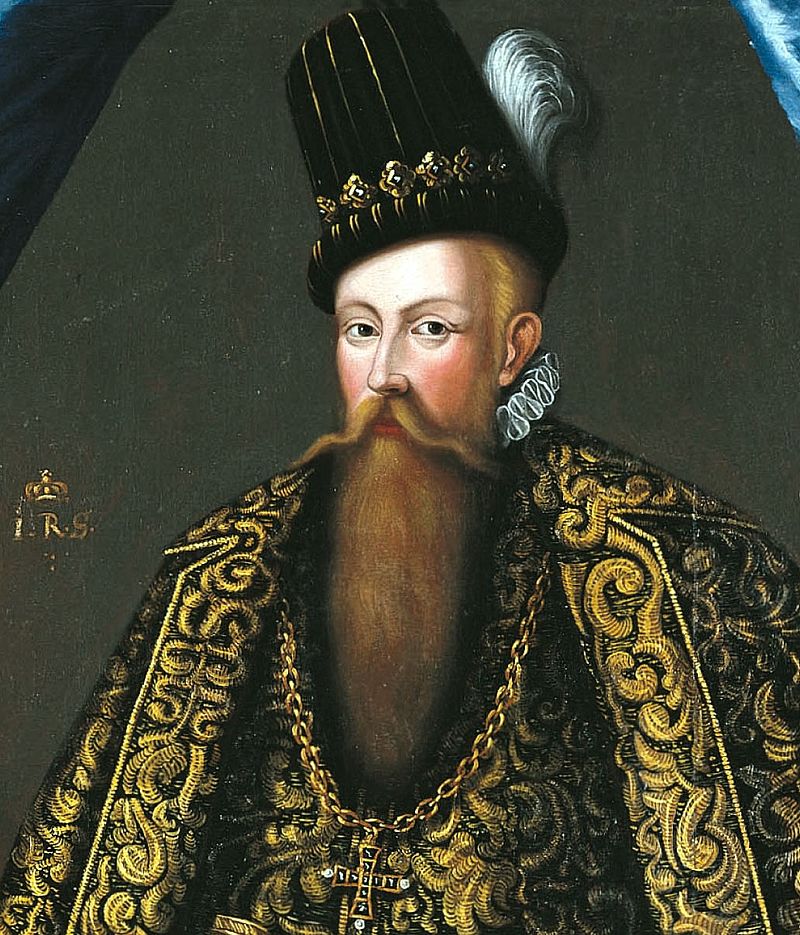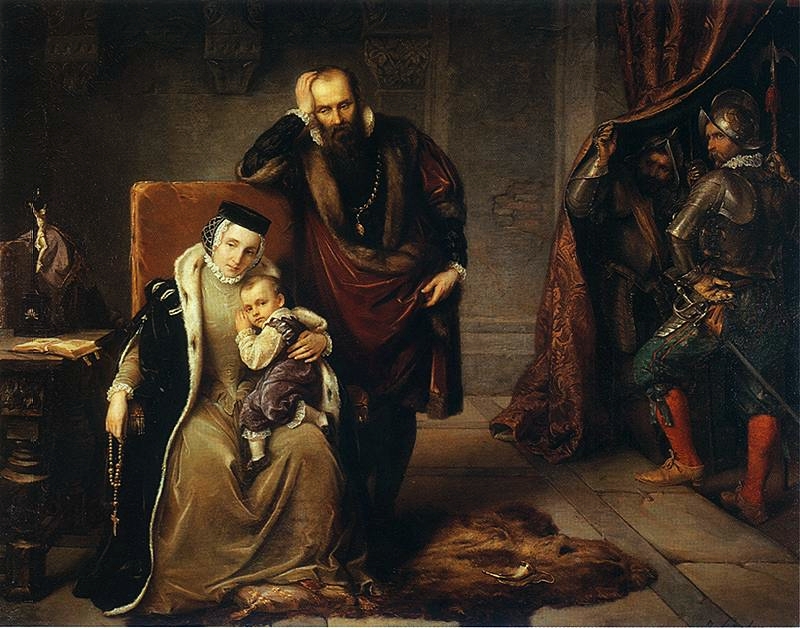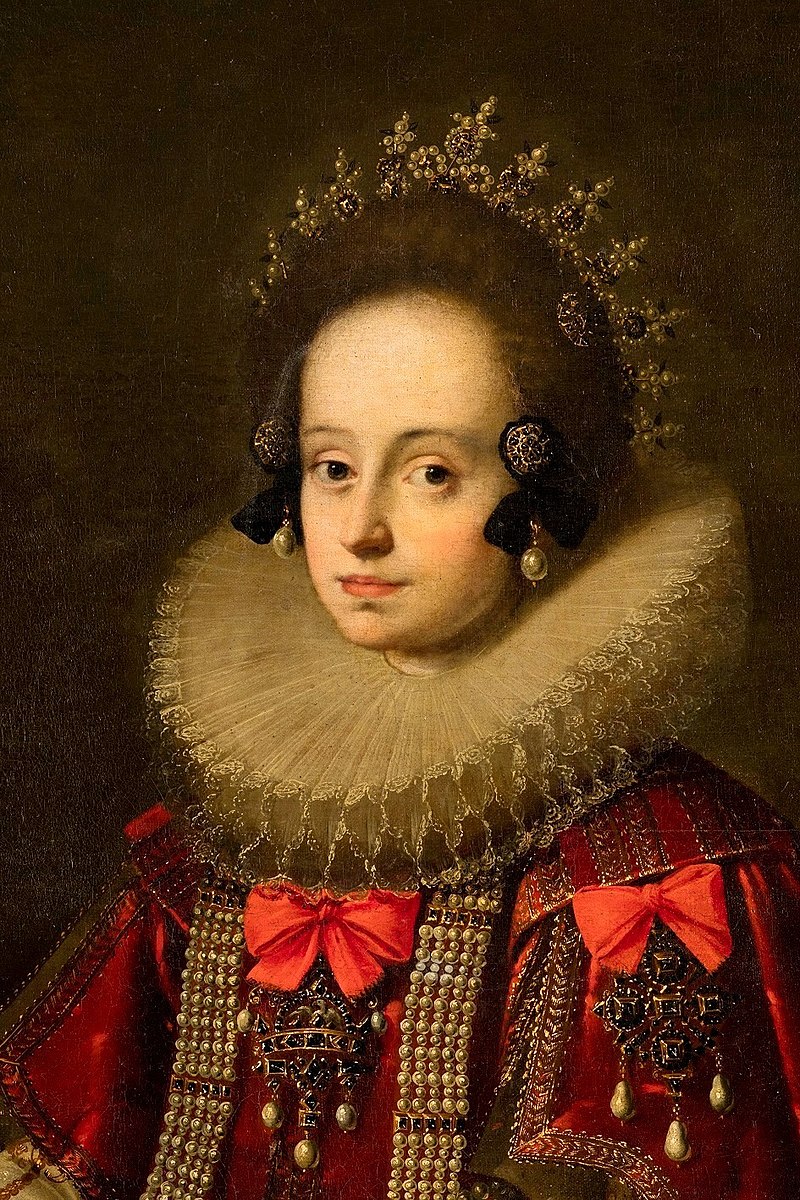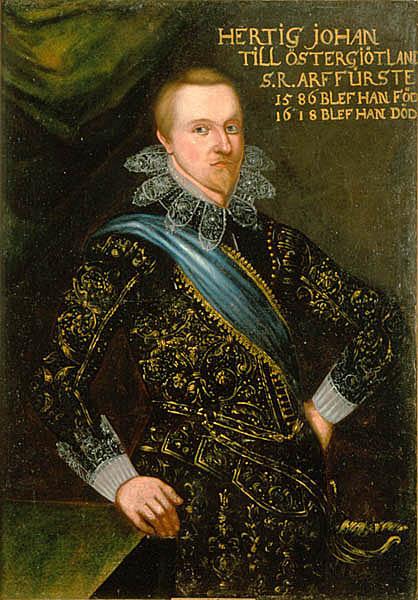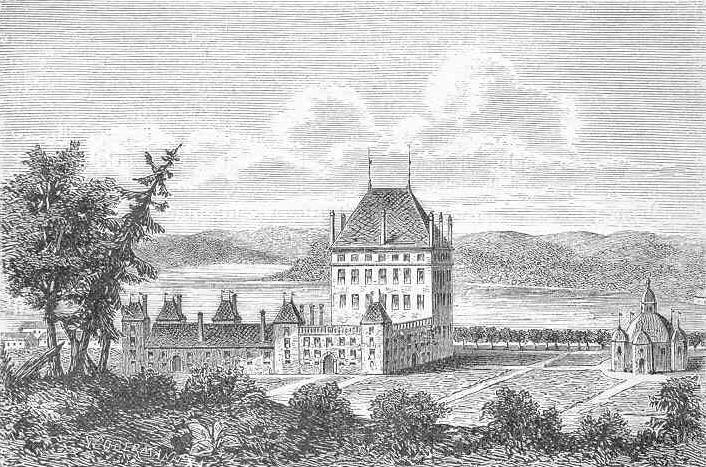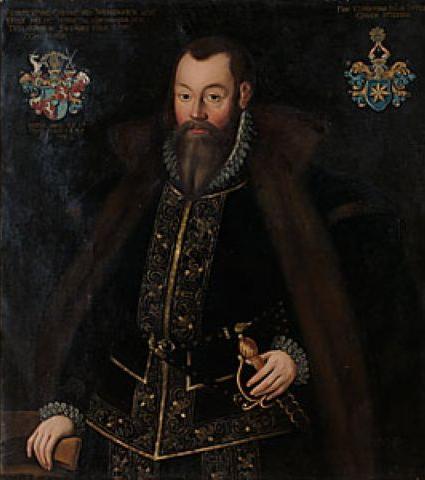by Susan Flantzer
© Unofficial Royalty 2021

Gustavus Adolphus the Great, King of Sweden; Credit – Wikipedia
Also known as Gustav II Adolf, King of Sweden, he was officially given the name Gustavus Adolphus the Great by the Riksdag of the Estates, the legislature, in 1634, two years after his death in battle. Gustavus Adolphus is considered one of the greatest military commanders in history and made Sweden a great power that would result in it becoming one of Europe’s largest and leading nations during the early modern period. Born on December 9, 1594, at Tre Kronor Castle which stood on the site of the present Royal Palace in Stockholm, Sweden, he was the eldest of the four children and the elder of the two sons of the future Karl IX, King of Sweden and his second wife Christina of Holstein-Gottorp.
Gustavus Adolphus had three younger siblings:
- Maria Elisabet of Sweden (1596 – 1618), married her paternal first cousin Prince Johan of Sweden, Duke of Östergötland, no children
- Kristina of Sweden (1598 – 1599), died in infancy
- Karl Philip of Sweden (1601 – 1622), married morganatically Elizabet Ribbing, had one posthumous daughter
Gustavus Adolphus had six half-siblings from his father’s first marriage to Maria of Palatinate-Simmern but only one survived childhood:
- Margareta Elisabeth of Sweden (1580 – 1585), died in childhood
- Elisabeth Sabina of Sweden (1582 – 1585), died in childhood
- Ludwig of Sweden (born and died 1583), died in infancy
- Katharina of Sweden (1584 – 1638), married Count Palatine Johann Kasimir of Palatinate-Zweibrücken-Kleeburg, had eight children including Carl X Gustav, King of Sweden
- Gustav of Sweden (born and 1587), died in infancy
- Maria Sweden (1588 – 1589), died in infancy

Karl IX, King of Sweden, Gustavus Adolphus’ father; Credit – Wikipedia
Gustavus Adolphus’ father Karl was Regent of Sweden from 1599–1604 and King of Sweden from 1604 – 1611. He had the good sense to prepare his son for his future role. Gustavus Adolphus received a thorough humanistic and political education from Johannes Bureus, the Swedish royal librarian, and Johan Skytte, later the Chancellor of Uppsala University. From the age of eight, Gustavus Adolphus was allowed to attend the meetings of the Council of State and from the age of twelve, he performed public duties such as receiving foreign envoys. When Gustavus Adolphus was fifteen years old, he gave his first speech from the throne. He had military training with an experienced professional soldier Jakob De la Gardie. Gustavus Adolphus spoke only German with his mother and Swedish with his father and was fluent in both languages. He was taught all subjects in Latin but he also learned French, Dutch, and ancient Greek.
Gustavus Adolphus’ early education and training proved useful as he became King of Sweden at the age of sixteen, when his father Karl IX, King of Sweden died on October 30, 1611. At that time Sweden was a poor country with a weak army at war with Denmark, Poland, and Russia. With the help of the stateman Axel Oxenstierna, considered one of the most influential people in Swedish history, Gustavus Adolphus reshaped Sweden’s government and transformed the Swedish army into Europe’s most modern, well-trained, and feared army. Under Gustavus Adolphus’ leadership, peace was made with Denmark and Poland, and Russia was defeated on the battlefield.

Maria Eleonora of Brandenburg, Gustavus Adolphus’ wife; Credit – Wikipedia
In 1616, the 22-year-old Gustavus Adolphus started looking for a Protestant bride. He had received positive reports about the beauty and intelligence of 17-year-old Maria Eleonora of Brandenburg, the daughter of Johann Sigismund, Elector of Brandenburg, and Anna of Prussia. After prolonged back-and-forth negotiations with Maria Eleonora’s family, complete with many changes of opinions, it was agreed that Maria Eleonora and Gustavus Adolphus would marry. On October 7, 1620, Maria Eleonora left Brandenburg for Sweden with her mother Anna and her sister Katrina. Gustavus Adolphus and Maria Eleonora were married in Stockholm on November 25, 1620. During the first years of the marriage, Maria Eleonora’s mother Anna and sister Katarina remained in Sweden. They did not return to Brandenburg until August 1624.
Although Gustavus Adolphus was successful in many endeavors, he was not successful in providing a male heir:
- Stillborn daughter, born July 24, 1621
- Christina (1623 – 1624), died in infancy
- Stillborn son, born May 1625
- Christina, Queen of Sweden (1626 – 1689), unmarried, succeeded her father, abdicated, subsequently converted to Roman Catholicism, and moved to Rome

Gustavus Adolphus’ daughter the future Queen Christina as a child; Credit – Wikipedia
When Gustav Adolphus’s fourth child was born, he was told that the child was a boy. His half-sister Katarina informed him that the child was not a boy but a girl, and then carried the baby to him, afraid of his reaction. Gustav Adolphus said, “She’ll be clever, she has made fools of us all!” and decided her name would be Christina after his mother. He ordered the birth to be announced with all the ceremonies usually given to the birth of a male heir. This seems to indicate that Gustavus Adolphus had little hope of having other children. Maria Eleonora’s state of health seems to be the most likely explanation for this. Gustavus Adolphus’ legitimate younger brothers had all died. The one legitimate female left, his half-sister Katarina was excluded from the succession when she married a non-Lutheran. Gustavus Adolphus recognized Christina’s eligibility as a female heir and she became the undisputed heir presumptive.
The Thirty Years’ War was a conflict fought mostly within the Holy Roman Empire, mainly in present-day Germany, from 1618 to 1648. Although it started as a religious war (Protestant nations against Catholic nations), it developed into a territorial war. Before Gustavus Adolphus left to lead the Swedish army in the Thirty Years’ War, he secured his daughter Christina’s right to inherit the throne, in case he never returned and gave orders that Christina should receive an education normally given to only boys.
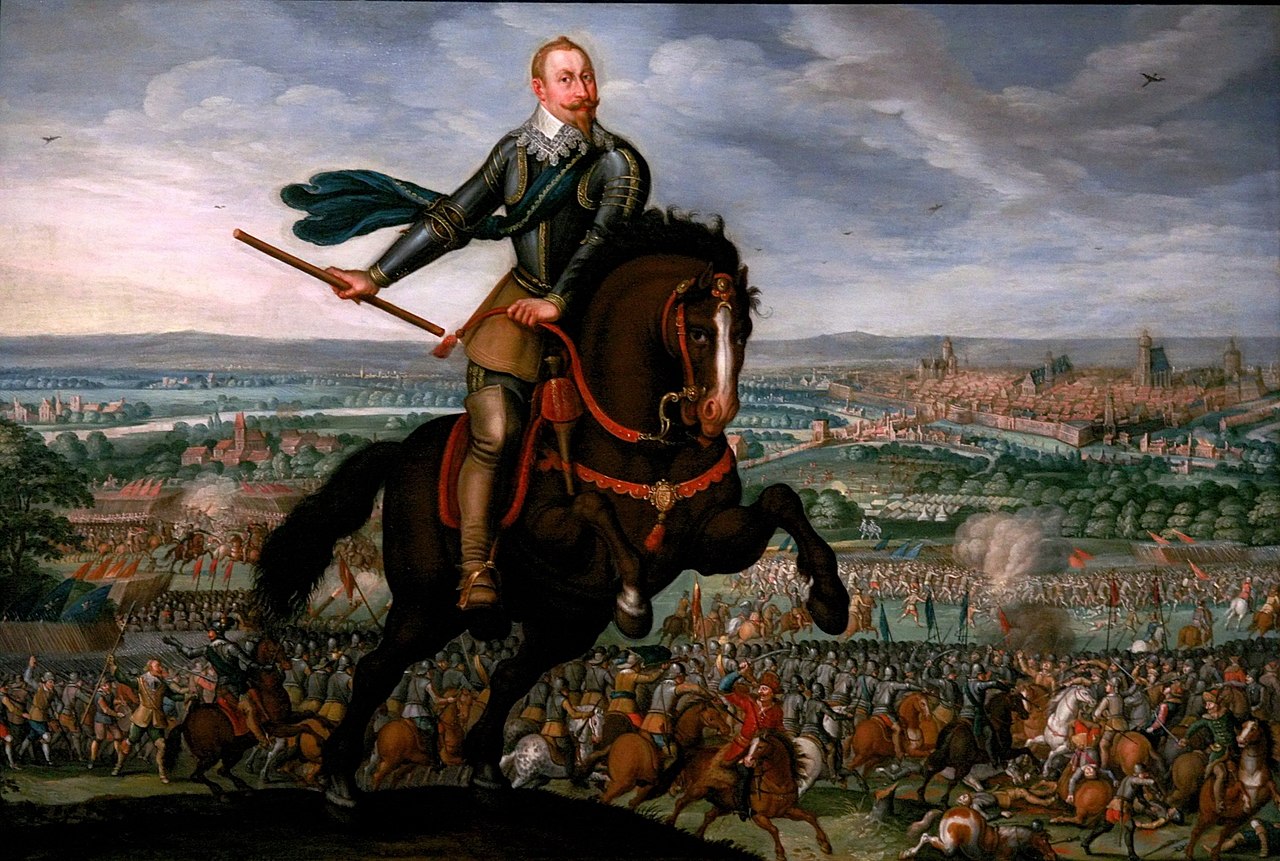
Gustavus Adolphus at the Battle of Breitenfeld by Johann Walter; Credit – Wikipedia
Gustavus Adolphus won a decisive victory at the First Battle of Breitenfeld in September 1631. He then marched across Germany, establishing his winter quarters near the Rhine, where he planned for the invasion of the rest of the Holy Roman Empire. He had hopes of conquering the Holy Roman Empire and ascending its throne. However, it was not to be. The Battle of Lützen occurred on November 16, 1632, between a Holy Roman Empire force under Albrecht von Wallenstein and a combined Swedish-German army led by Gustavus Adolphus. Generally viewed as a narrow Swedish victory, both sides suffered heavy casualties and it is now chiefly remembered for the death of Gustavus Adolphus.
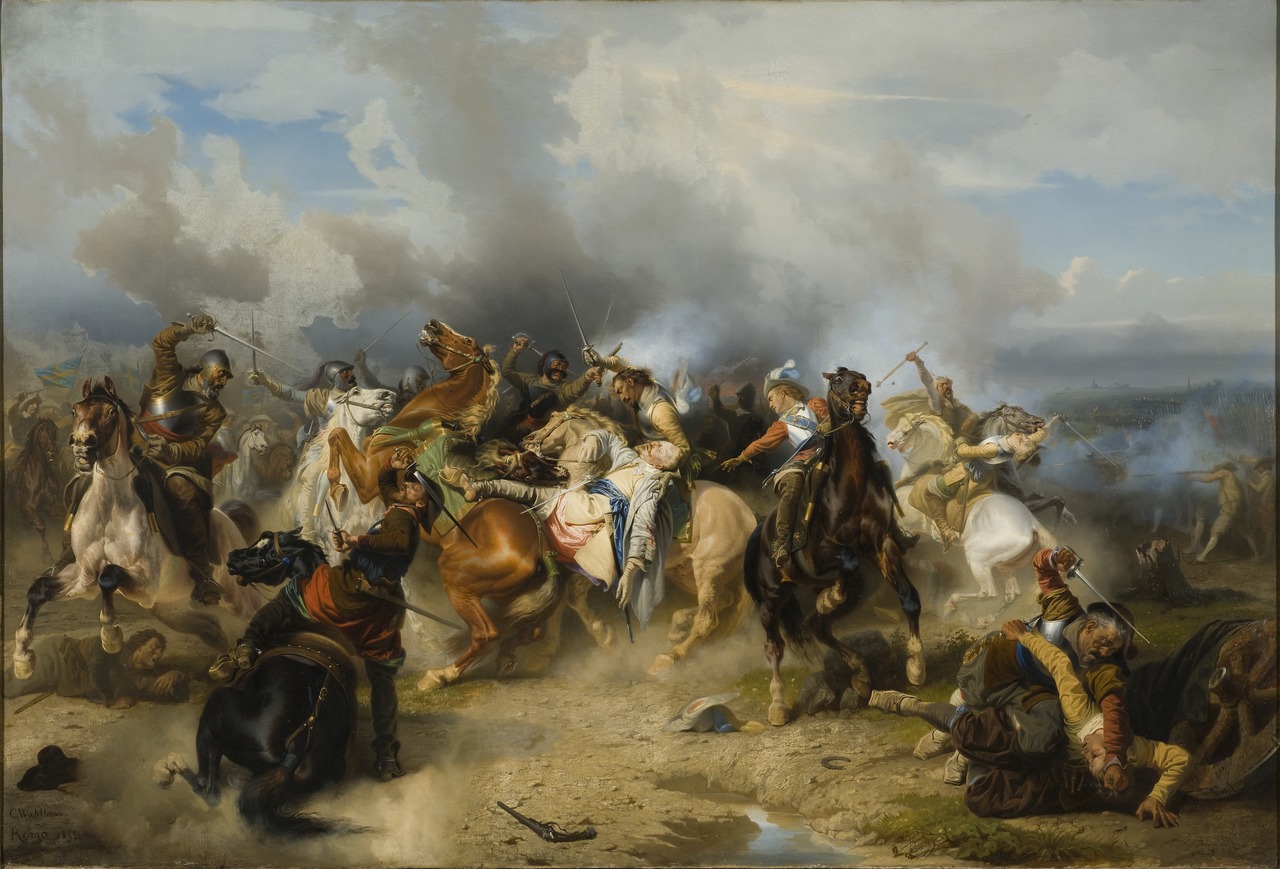
Death of King Gustav II Adolf of Sweden at the Battle of Lützen by Carl Wahlbom; Credit – Wikipedia
Gustavus Adolphus was leading the cavalry charge when he was separated in a mix of gun smoke and fog. A bullet hit his left arm below the elbow. At the same time, his horse was hit by a bullet to the neck and became difficult to control. In the fog and smoke, Gustavus Adolphus mistakenly rode behind enemy lines. There he was shot in the back, stabbed, and fell from his horse. Lying on the ground, 37-year-old Gustavus Adolphus received a final, fatal shot to his temple. When the shooting stopped and the smoke cleared, Gustavus Adolphus’ horse was spotted between the two lines but he was not on it and was nowhere to be seen. After a search, his body was found and secretly evacuated from the battlefield in a Swedish artillery wagon.

Embarkation of the body of Gustavus Adolphus at the port of Wolgast in 1633 by Carl Gustaf Hellqvist; Credit – Wikipedia
Gustavus Adolphus’ body was taken to Weissenfels, in the Electorate of Saxony, now in the German state of Saxony-Anhalt, where it was embalmed and dressed in a beautiful gold and silver woven uniform, then brought to Wolgast, in the Duchy of Pomerania, now in the German state of Mecklenburg-Vorpommern. His body remained in Wolgast until the summer of 1633 when it was taken by ship to Sweden. Once in Sweden, Gustavus Adolphus’ body was taken to Nyköping Castle in Nyköping, Sweden, and remained there until it was time to take it to Stockholm for the funeral.
Gustavus Adolphus’ wife caused the delay of his burial. Already suffering from mental issues, Maria Eleonora’s grief was quite painful and her mental issues worsened considerably. She ordered that her husband’s heart be brought to her to keep him always near. She also refused to have her husband buried, spending whole days next to the body. Finally, eighteen months after the death of Gustavus Adolphus, the funeral and burial were held on June 22, 1634, at Riddarholmen Church in Stockholm, Sweden.
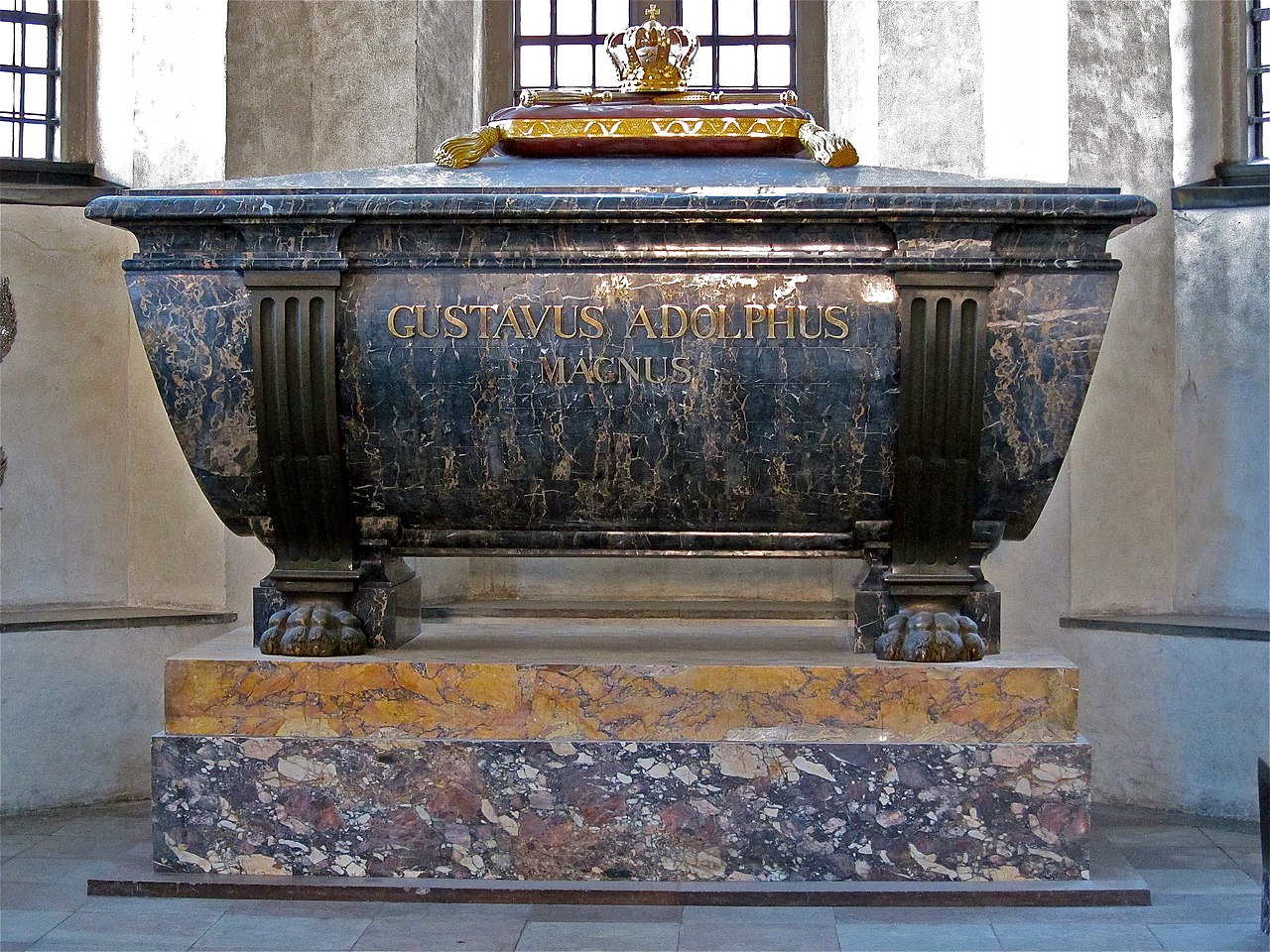
Gustavus Adolphus’ sarcophagus at Riddarholmen Church; Credit – By Frankie Fouganthin – Own work, CC BY-SA 3.0, https://commons.wikimedia.org/w/index.php?curid=16785914
This article is the intellectual property of Unofficial Royalty and is NOT TO BE COPIED, EDITED, OR POSTED IN ANY FORM ON ANOTHER WEBSITE under any circumstances. It is permissible to use a link that directs to Unofficial Royalty.
Kingdom of Sweden Resources at Unofficial Royalty
- Kingdom of Sweden Index
- Swedish Orders and Honours
- Swedish Royal Dates
- Swedish Royal Burial Sites
- Swedish Royal Christenings
- Swedish Royal FAQs
- Swedish Royal Residences
- Swedish Royal Weddings
- Line of Succession to the Throne of Sweden
- Profiles of the Swedish Royal Family
Works Cited
- De.wikipedia.org. 2021. Gustav II. Adolf – Wikipedia. [online] Available at: <https://de.wikipedia.org/wiki/Gustav_II._Adolf> [Accessed 19 August 2021].
- En.wikipedia.org. 2021. Gustavus Adolphus – Wikipedia. [online] Available at: <https://en.wikipedia.org/wiki/Gustavus_Adolphus> [Accessed 19 August 2021].
- Flantzer, Susan. Karl IX, King of Sweden. 2021. [online] Available at: <https://www.unofficialroyalty.com/karl-ix-king-of-sweden/> [Accessed 19 August 2021].
- Sv.wikipedia.org. 2021. Gustav II Adolf – Wikipedia. [online] Available at: <https://sv.wikipedia.org/wiki/Gustav_II_Adolf> [Accessed 19 August 2021].






